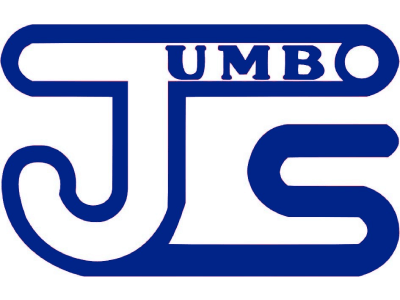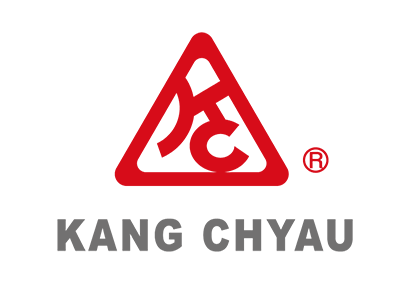Comparing Feeding Methods for Plastic Recycling Equipment: Which One Suits Your Needs?
In the realm of plastic recycling, the way materials are fed into recycling equipment plays a pivotal role in determining overall efficiency and output. Whether handling thin films, bulky plastic waste, or powders, selecting the appropriate feeding method is essential for optimizing machine performance and maintaining consistent production. This article delves into the primary feeding methods used in plastic recycling equipment, highlighting their unique features and ideal applications.
1. Cutter Compactor
The cutter compactor, also known as the agglomerator, is specifically designed to manage thin films and crushed bulky waste. By leveraging friction to generate heat, this method compresses lightweight, voluminous materials into denser, manageable blocks.
Key Advantages:
-
Compression and Feeding: Lightweight materials are transformed into dense blocks, boosting the overall output of recycling machines.
-
Moisture Removal: The compaction process preheats the materials, enabling moisture to evaporate and reducing the degassing workload on the extruder.
Best For: Thin films and crushed bulky waste. This method significantly enhances material preparation and overall recycling efficiency.
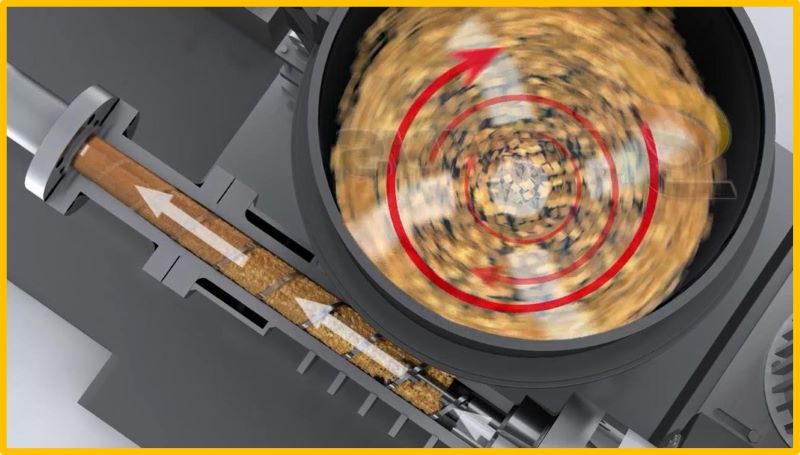
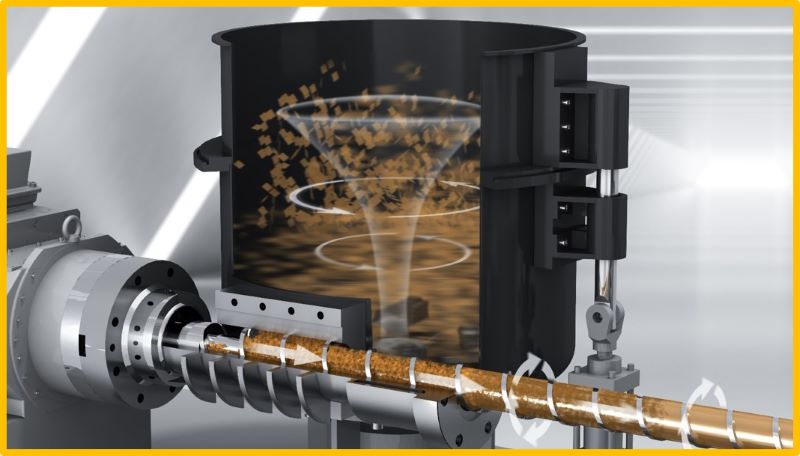
2. Forced Feeding
Ideal for clean, dry materials such as powders and crushed waste, forced feeding offers a cost-effective and energy-efficient solution. Unlike other methods, it eliminates the need for preheating during the feeding stage.
Key Advantages:
-
Economic Choice: Minimizes energy consumption by bypassing the preheating process, making it an excellent option for facilities focused on reducing operational costs.
-
Anti-Bridging Screw: Utilizes a specially treated screw to prevent material bridging, ensuring a steady, consistent feed into the extruder.
Best For: Powders and crushed waste where bridging could disrupt the recycling process.
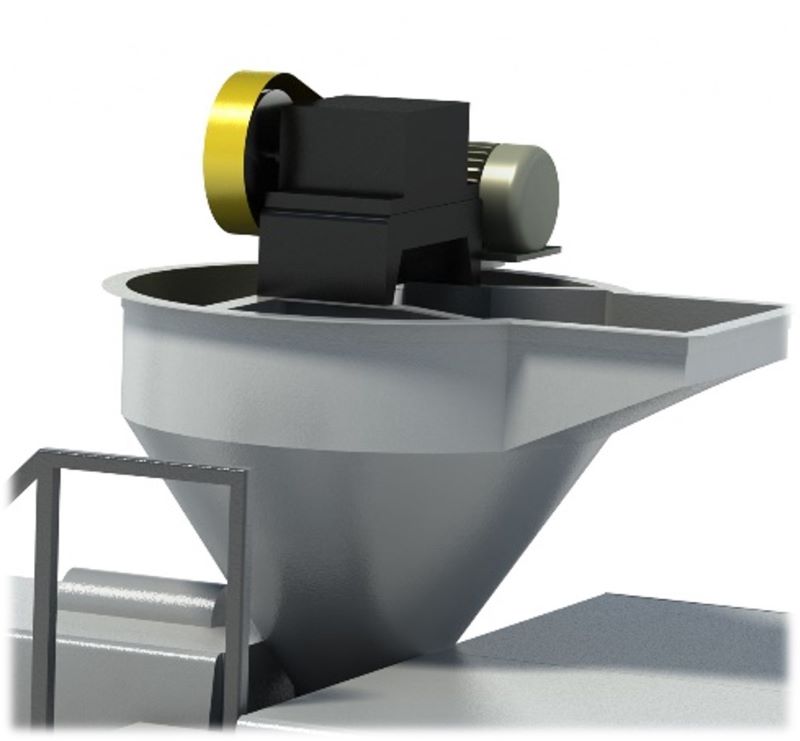
3. Side Feeding with Forced Compression
This advanced method is designed to maximize feeding volume and improve material flow, making it particularly suitable for washed and squeezed films, as well as crushed bulky waste.
Key Advantages:
-
Increased Feeding Volume: Ensures a stable feed into the extruder, keeping the screw fully loaded to maximize machine output.
-
Material Preheating: Features an integrated heating system to preheat materials during feeding, reducing the extrusion process workload.
Best For: Operations requiring stable feeding and high production efficiency, especially for films and bulkier waste materials.
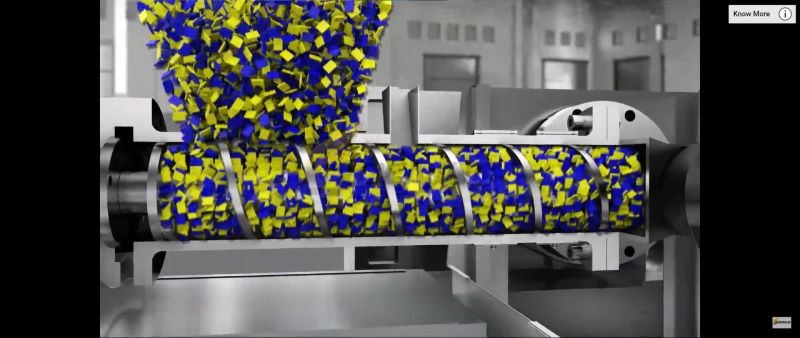
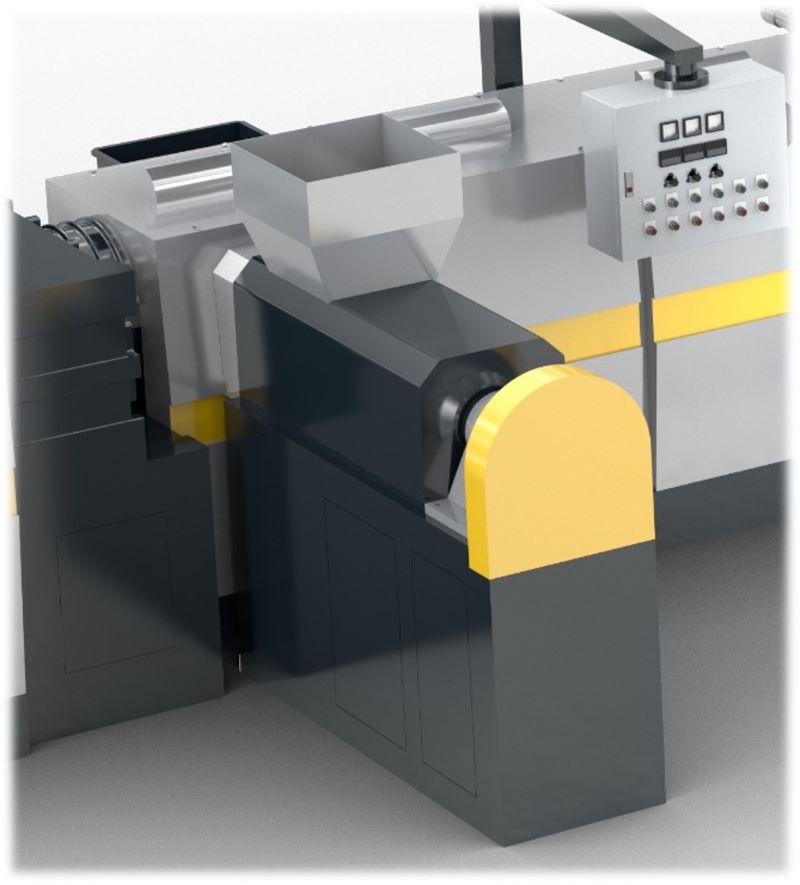
4. Shredder Feeding
For facilities managing diverse plastic waste types, shredder feeding is a versatile and effective solution. It breaks down large plastic waste pieces that are too big to feed directly into the recycling process.
Key Advantages:
-
All-Inclusive Solution: Highly compatible with all plastic waste types, shredding oversized materials into manageable sizes.
-
Streamlined Processing: Efficiently crushes and feeds large waste directly into the extruder, simplifying the recycling workflow.
Best For: Recycling operations handling a wide range of materials, offering flexibility and high compatibility across various waste types.
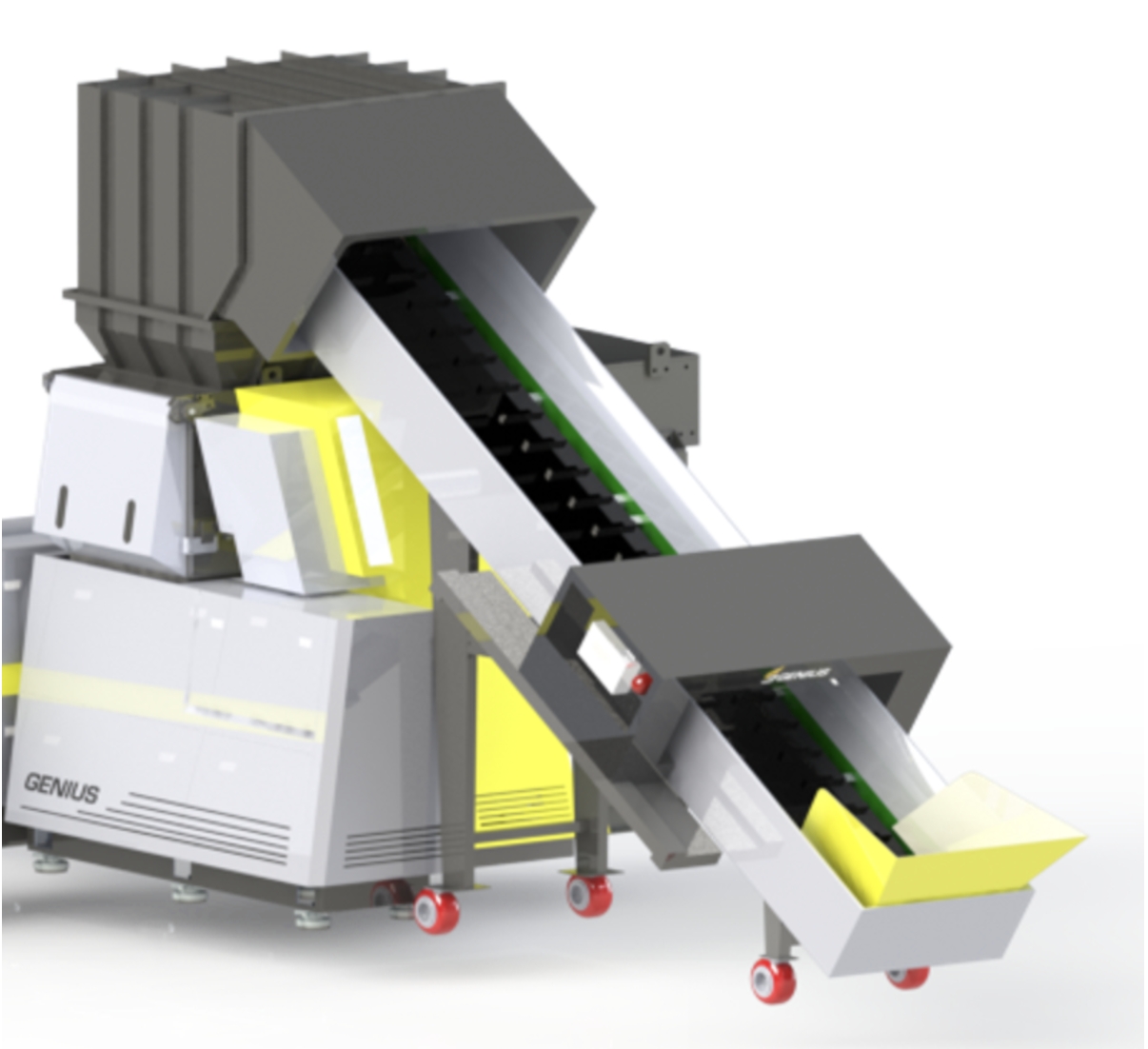
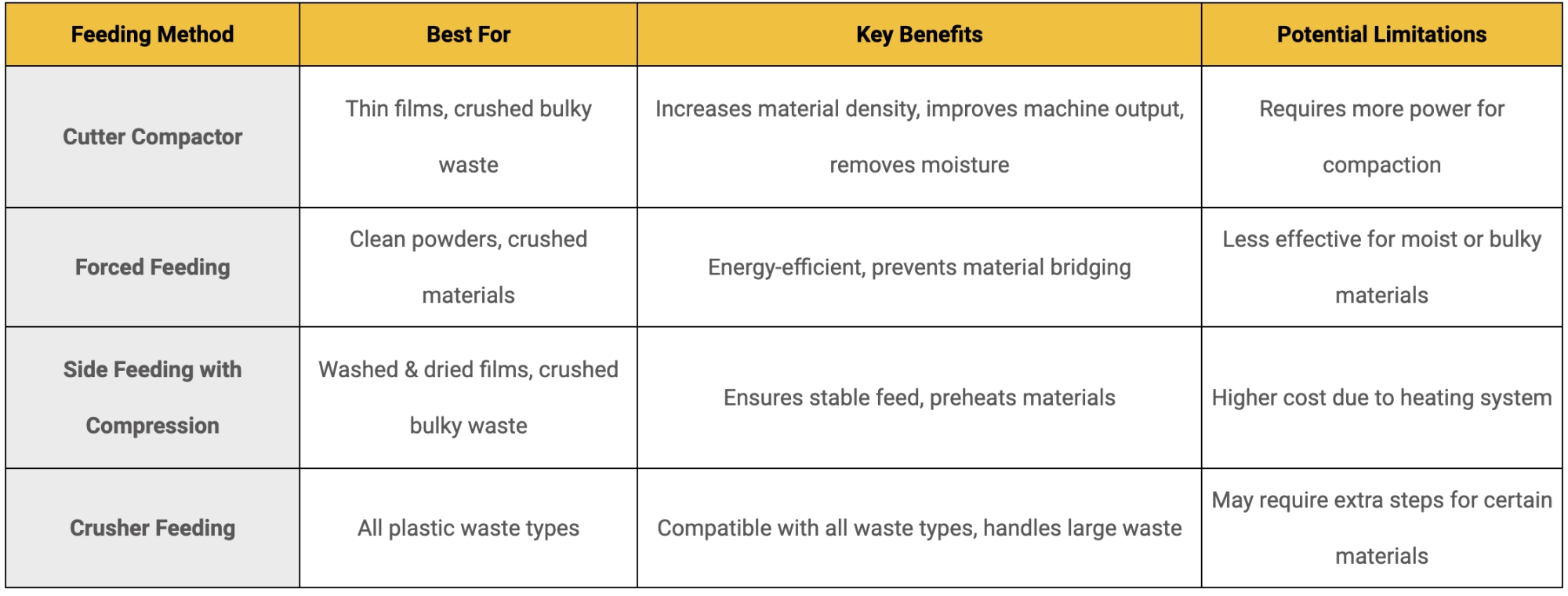
Maximizing Recycling Efficiency: Next Steps
Choosing the right feeding method is a critical step toward optimizing your recycling operations. Whether you opt for cutter compactors, forced feeding, side feeding with compression, or shredder feeding, the right choice can dramatically enhance your equipment's efficiency and output.
To further improve your recycling process, consider additional equipment such as Screw Press Dewatering Machines, which are indispensable for moisture removal and material preparation. Click here to learn more about Genius Screw Press Dewatering Machines.
For tailored advice on the best feeding methods and recycling equipment, contact us today. We’re ready to help you achieve peak performance for your recycling operations.
Máquina Sopladora
- Máquina automática de moldeo por soplado
- Maquinaria de moldeo por soplado
- Máquinas de moldeo por soplado de extrusión continua
- Máquina de extrusión y soplado
- Extrusora Sopladora De Plastico
- Máquina de moldeo por soplado totalmente eléctrica
- Máquinas de moldeo por soplado hidráulico
- Máquina de moldeo por soplado de plástico
Extrusora de Plástico
- Línea de extrusión de película de burbujas de aire
- Línea de extrusión de película de burbujas de aire
- Línea de coextrusión de hoja de burbujas de aire
- Máquinas para hacer bolsas
- Blow Film Making Machine
- Blow Film Exusion
- Máquina de hacer películas sopladas
- Máquina de película fundida
- Máquina de recubrimiento
- Línea de extrusión de láminas de espuma EPS / EPE
- Extrusora
- Máquinas laminadoras
- Extrusion Lines For Filaments and Yarn
- Extrusion Lines For Pipes and Profiles
- Maquinaria de extrusión de monofilamento
- Línea de extrusión monofilamento
- PET Strapping Band Extrusion Lines
- Máquinas para fabricar bolsas de plástico
- Coextrusión de película plástica
- Máquinas de fabricación de tubos de plástico
- Máquina de fabricación de tubos de plástico
- Manguera de PVC que hace la máquina
- Máquinas para hacer paja
- Extrusora de doble husillo
- Extrusoras de doble husillo
- Máquina de fabricación de bolsas tejidas
Máquina recicladora de Plástico
- Línea de lavado de botellas
- Trituradora
- Granulador
- Pelletizador
- Pelletizadores
- Pelletizing Machines
- Línea de Reciclaje de Botellas PET
- Línea de lavado en caliente de PET
- Peletizadora De Plastico
- Equipo de reciclaje de plástico para preprocesamiento
- Máquinas de reciclaje de plástico
- Máquina de reciclaje de residuos plásticos
- Reciclaje de líneas
- Reciclaje de la máquina
- Desfibradora De Plastico
- Exprimidores
- Linea de lavado de plastico
- Equipo de Reciclaje de Residuos



